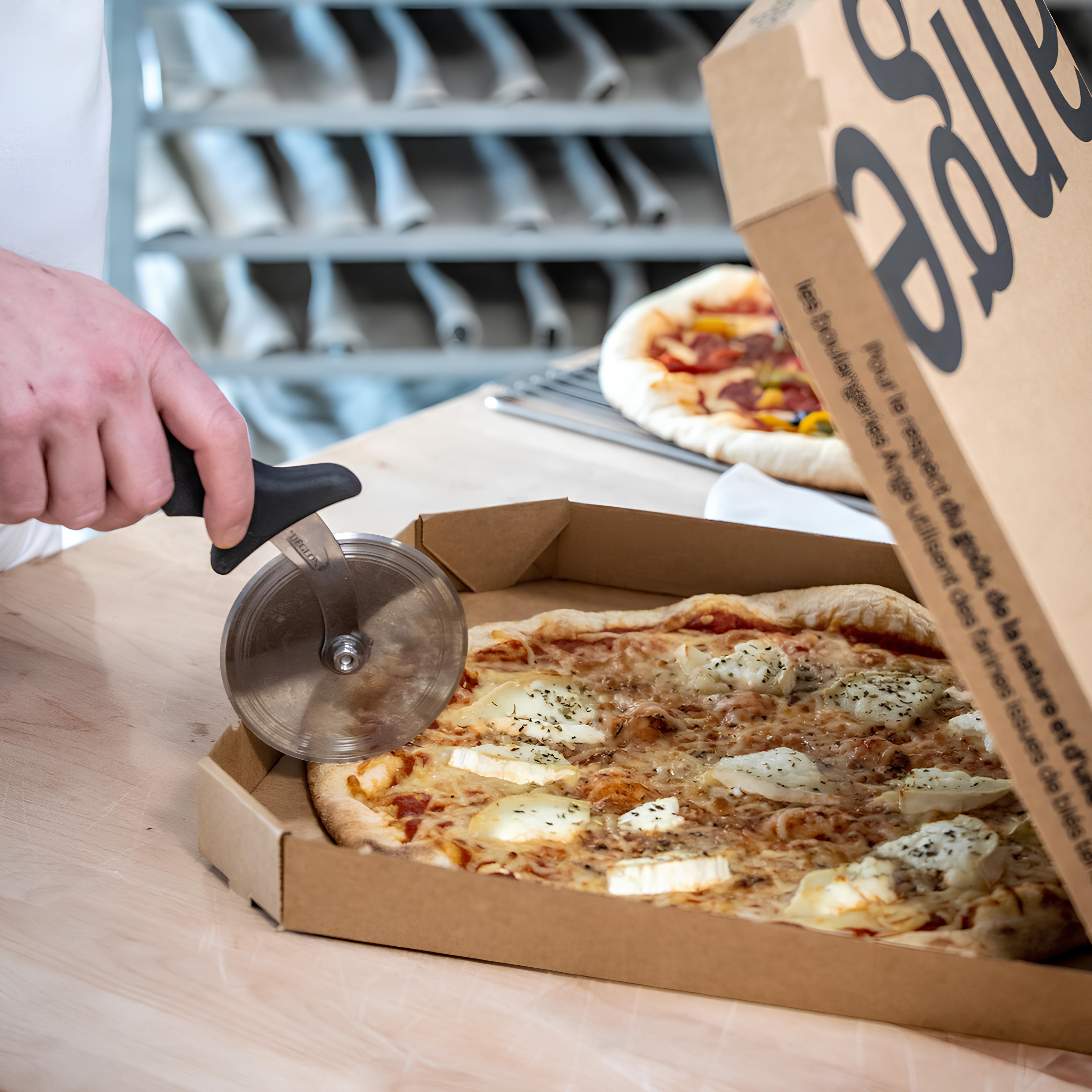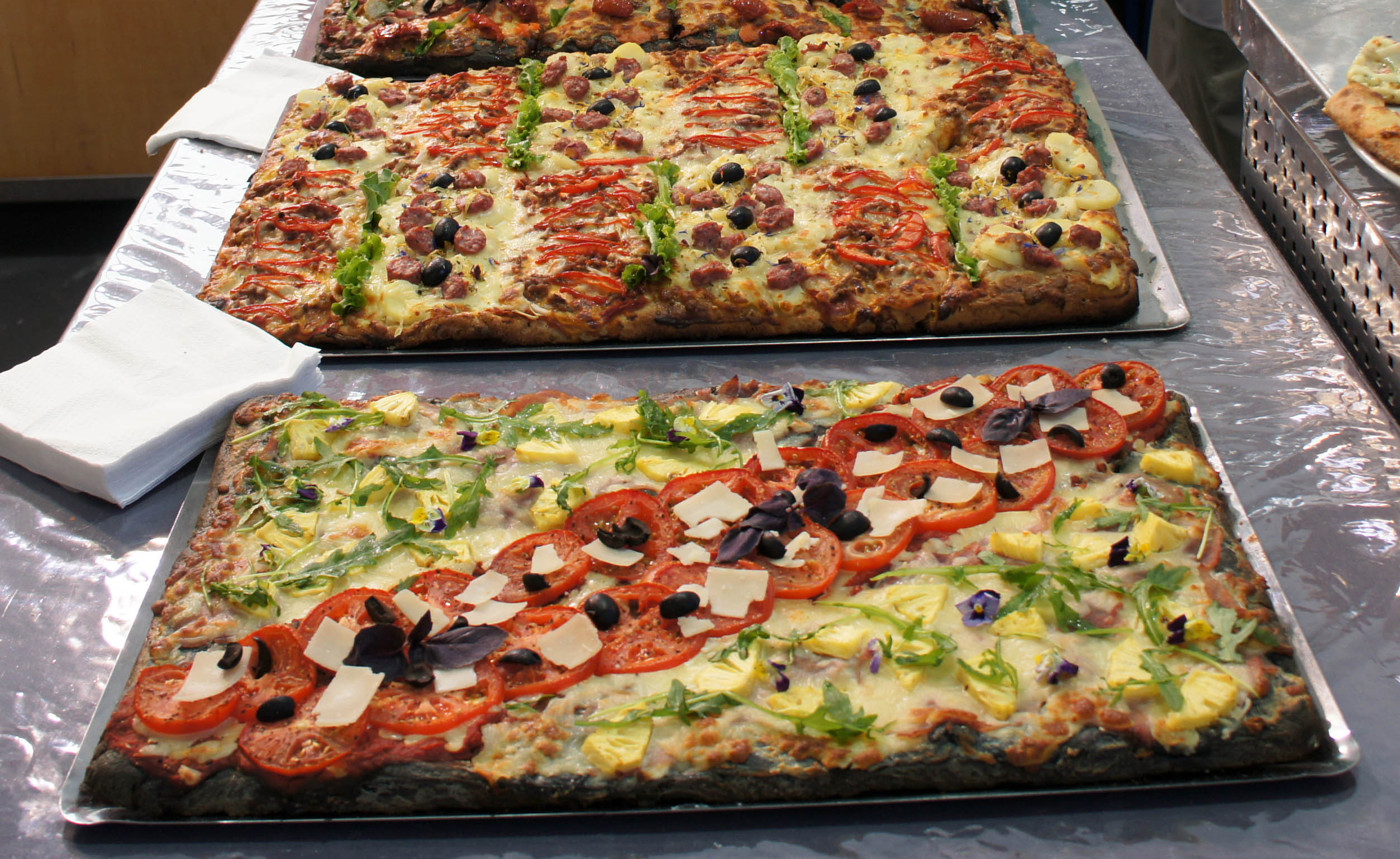Bakery-Style Pizza, the Secret Weapon of Bread Artisans
Text by Rémi Héluin
Cover photo by par Annija Mieze
While several styles of pizza have gained visibility in recent years, like the famous Neapolitan, it’s a much more discreet version that delights millions of French people at lunchtime. Thanks to their mastery of dough and fermentation, bakers embraced the product long ago, reshaping it to fit their own vision and constraints. Now a hallmark of accessibility for national bakery chains, this nod to distant Italian inspirations appears largely untouched by the trend toward upscale reinvention.
Celebrated on June 27 with a world day dedicated to this juicy fruit, pineapple has yet to make its way onto the pizzas found in bakery snack sections. Here, the toppings focus more on indulgence (with plenty of cheese, meats, and cold cuts) and on-trend flavors: Thai or curry chicken, burger, kebab... all options promoted by brands like Marie Blachère, Ange, or Sophie Lebreuilly, which have turned pizza into a customer magnet, thanks to generous sizes—their diameter approaches 40 cm—and attractive prices. That said, these roundabout bakery players have simply followed a path long pioneered by artisans: made with bread dough, the “bakery-style pizza” has carved out a place for itself in a highly competitive landscape.

© Boulangerie Ange
To achieve this, it has relied on the French love for the famous Italian dish — nearly 1.19 billion units were reportedly sold in France in 2023, according to Gira Conseil — while also shaking up its codes. Often made in rectangular trays and resting on a base as thick as it is soft, it has been identified by consumers as a specific version of the product. “Expectations are not the same as those for a pizza eaten in an Italian restaurant,” notes Nicolas Nouchi, founder of the Strateg’eat consultancy. The product must hold up in a display case and withstand reheating without major deterioration, which would be quite difficult for a Neapolitan pizza, for instance, as it is meant to be eaten immediately.
The temptation of premium positioning and technical sophistication put to the test by real-world conditions

While it has become a staple, especially with the rise of fast food operations within the bakery sector, can bakery-style pizza move upmarket and come closer to its “big sisters”? That’s the question several players in the French milling industry are trying to answer. With Bella Lucia flour, launched in 2018, Moulins Bourgeois (based in Verdelot, Seine-et-Marne) aimed to offer a raw material that follows the codes of their Italian counterparts. Its high baking strength (between W340 and W360) is combined with good extensibility and no shrinkage, all while using exclusively French wheat.
Since then, other players have joined the movement, such as Moulin de Rivières with its Arte Grano brand. These products, which offer genuine technical qualities and a lower carbon footprint compared to options from across the Alps, are nonetheless struggling to win over bakers. The latter are generally reluctant to change their habits and introduce an additional level of complexity into their production, due to the need to knead a specific dough.
The shift may come from the growing trend of hybridization: as bakeries increasingly adopt the codes of the restaurant world, making pizzas to order could be a natural extension of the artisan’s expertise. Initiatives in this direction remain modest, usually limited to “pizza nights” held once or twice a week. In Versailles (Yvelines), Maison Bigot, a longstanding bakery institution in the royal city, experimented with the concept through La Casa de Madame, a trattoria set up within one of its historic locations. The venue, however, seemingly failed to find its audience and was converted in 2024 into a crêperie, even though pizzas continue to fill the display cases of the brand’s other bakeries. A further sign that bakery-style pizza hasn’t revealed all its secrets yet… and may be perfectly at ease in sneakers, even if it never chose the boot.